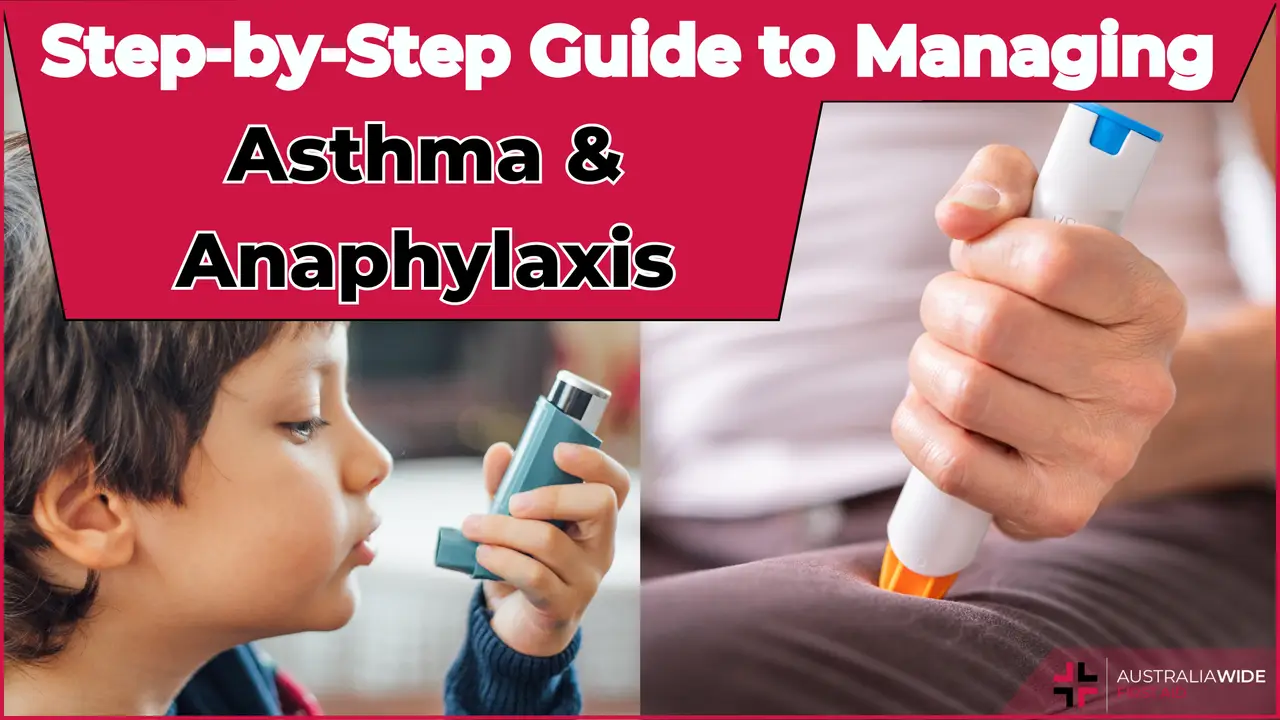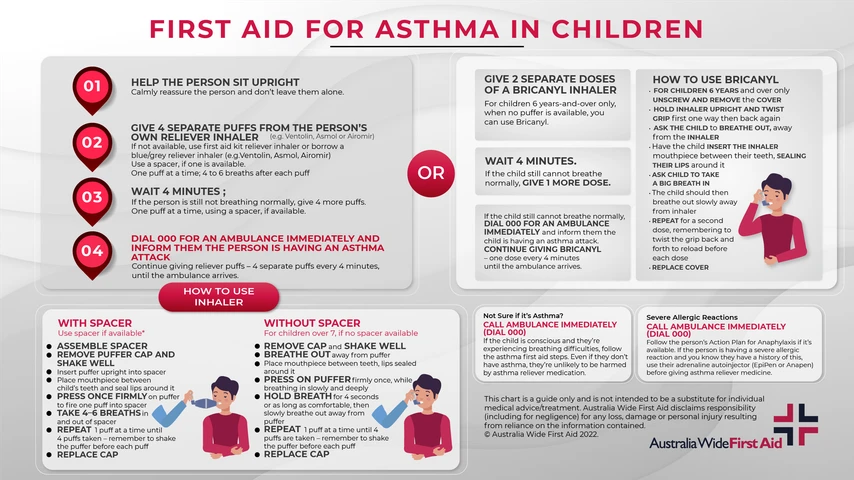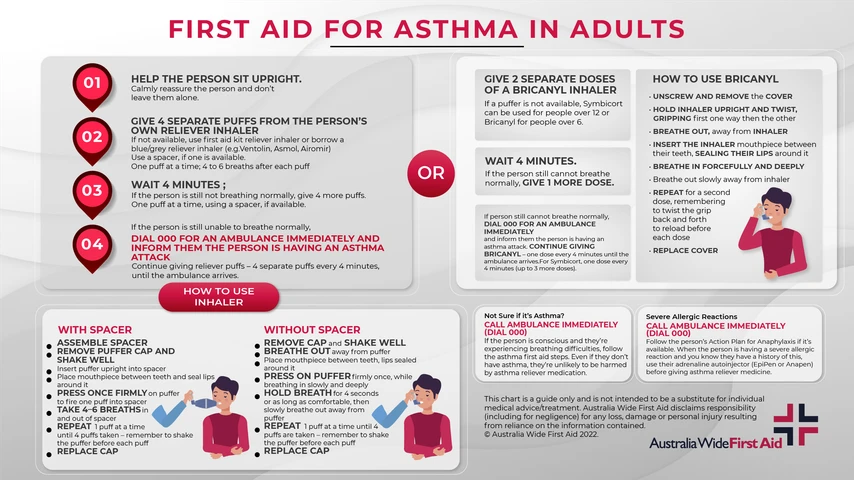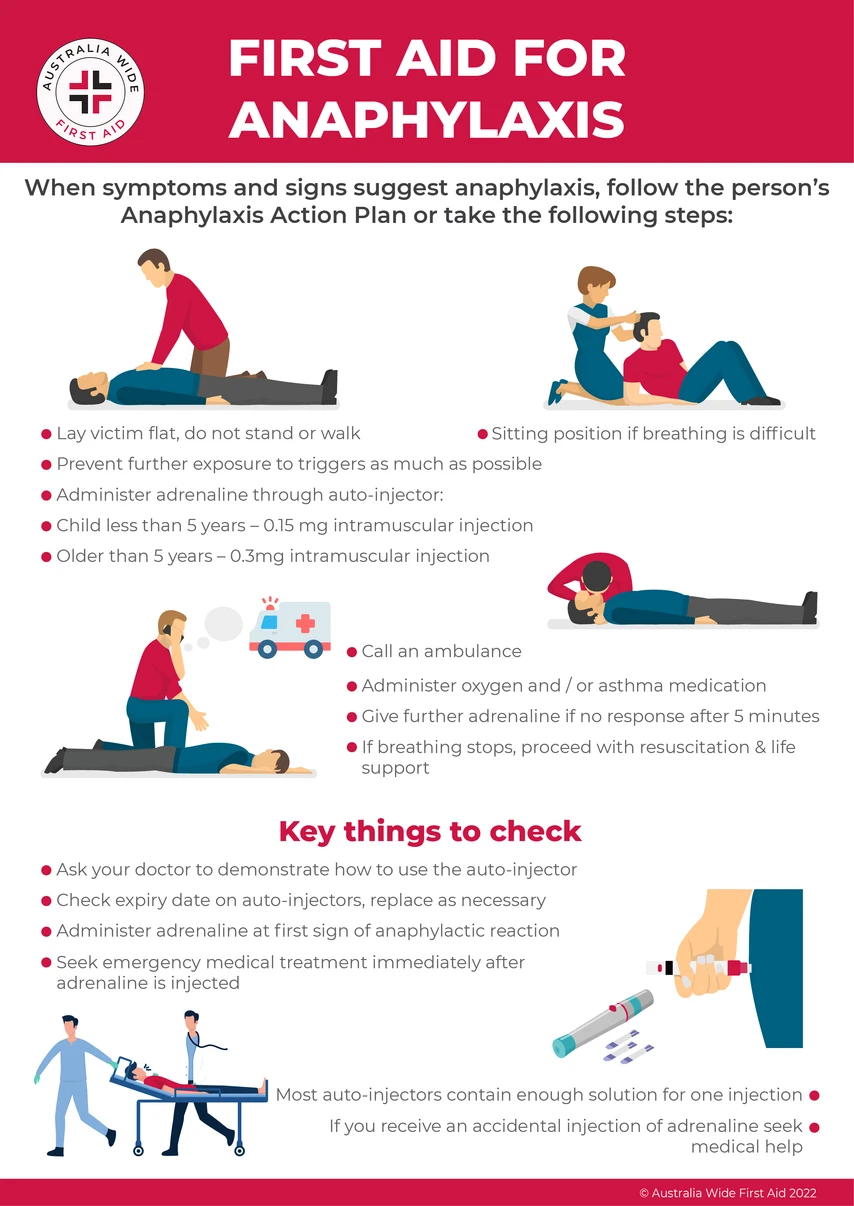Be Prepared: Step-by-Step Guide to Managing Asthma and Anaphylaxis


Asthma and anaphylaxis are two medical conditions that can be life-threatening if not managed properly.
This article provides a step-by-step guide to managing asthma and anaphylaxis, including recognizing the signs and symptoms of these conditions, providing emergency first aid, preventing and managing these conditions, and the importance of taking a first aid course.
With this guide, you can be better prepared to recognize, prevent, and manage asthma and anaphylaxis.

Asthma and anaphylaxis are two of the most common medical conditions that can be life-threatening if not properly managed. It is important to recognise the signs and symptoms of both conditions in order to take proper action.
Asthma is a chronic lung disease characterized by difficulty breathing. Common symptoms of asthma include shortness of breath, chest tightness, wheezing, and coughing. These symptoms can range from mild to severe, and can be triggered by allergens or other irritants.
Anaphylaxis is a severe allergic reaction that can be life-threatening. Symptoms of anaphylaxis can include hives, swelling of the face, throat or tongue, difficulty breathing, dizziness, confusion, and shock. Anaphylaxis can be triggered by certain foods, medications, or insect stings.
It is important to be aware of the signs and symptoms of both asthma and anaphylaxis so that proper action can be taken quickly. If you or someone you know is experiencing any of these symptoms, seek medical attention immediately. With proper management and treatment, people with asthma and anaphylaxis can lead healthy, active lives.

Emergency first aid is an essential part of managing asthma and anaphylaxis. It is important to be aware of the symptoms and how to respond in an emergency.
For asthma, the main emergency first aid treatment is to administer the prescribed reliever medication. This medication can be administered via a spacer or nebuliser. If the person is struggling to breathe or their reliever medication does not work, seek urgent medical attention.
In an anaphylactic emergency, the person will require an adrenaline auto-injector (e.g. EpiPen). If the person has an adrenaline auto-injector, administer it as soon as possible. Call emergency services and seek urgent medical attention.
It is important to remain calm during an emergency and follow the steps above. There are also other emergency first aid treatments that may be necessary such as positioning the person, providing supplemental oxygen, and removing any tight clothing.
By understanding the key emergency first aid treatments for asthma and anaphylaxis, you are better prepared to manage a medical emergency. It is important to be aware of the steps that need to be taken in an emergency and to have a plan in place.

Preventing and managing asthma and anaphylaxis is essential for everyone, but especially those who suffer from these serious conditions.
Firstly, it is important to identify the triggers that can cause an asthma or anaphylaxis flare-up. Common triggers are allergens, exercise, cold air, and stress. Knowing the triggers allows people to avoid them, reducing the chance of an attack.
Regular medications are also essential for managing asthma and anaphylaxis. Inhaled corticosteroids help to reduce inflammation and prevent attacks, while adrenaline auto-injectors (EpiPens) are a life-saving treatment for anaphylaxis. It is important to take medications as prescribed and to never skip doses.
It is also important to have an asthma or anaphylaxis action plan. This plan should include a list of medications, dosages, and instructions for what to do in the event of an attack. It should also include an emergency contact list.
Finally, it is important for people to keep their environment free of asthma and anaphylaxis triggers. This means avoiding contact with irritants, keeping pets out of the home, and ensuring that carpets, drapes, and furniture are cleaned regularly.
These steps are essential for preventing and managing asthma and anaphylaxis. With the right knowledge and preparation, people can live a normal life without fear of an attack.
First aid courses are essential for anyone who wants to be prepared to manage asthma and anaphylaxis. Australia Wide First Aid offers a nationally recognised HLTAID011 Provide First Aid course which provides the necessary skills and knowledge to effectively respond to asthma and anaphylaxis emergencies. Participants learn how to recognise the symptoms of asthma and anaphylaxis, provide initial response, administer medications and provide appropriate first aid treatment.
The importance of having the skills and knowledge to effectively respond to asthma and anaphylaxis emergencies can not be understated. Taking a first aid course can ensure that people are prepared to recognise the signs of anaphylaxis or asthma and respond quickly and appropriately. The skills learnt in a first aid course can help provide vital treatment that may save the life of someone in an emergency.
First aid courses also help increase confidence in the workplace, by providing peace of mind that workers are trained in the event of an emergency. Knowing that the staff can handle an asthma or anaphylaxis emergency can lead to greater efficiency and productivity in the workplace.
Asthma emergencies can be frightening, confusing, and even life-threatening. Arm yourself with the knowledge of how to recognise and treat an asthma episode and asthma emergency with our fully-online Asthma First Aid course.
Or if you need asthma knowledge and skills for your workplace, our Workplace Asthma Management and First Aid gives you the skills and knowledge to be able to develop an asthma risk assessment and emergency management strategy to handle asthma episodes in the workplace. If you want to go one step further, our Workplace Asthma and Anaphylaxis Management and First Aid course also includes what you need to know about allergies and anaphylaxis.
All of our online courses can be completed at your work desk or in the comfort of your own home, with a Certificate of Completion to hand to your employer, put on your resume, or simply give you the peace of mind knowing that you can actually be helpful in an emergency situation.
In conclusion, taking a first aid course for asthma and anaphylaxis management is an essential step for anyone who wants to be prepared in the event of an emergency. Australia Wide First Aid’s nationally recognised HLTAID011 Provide First Aid course provides the necessary skills and knowledge to respond quickly and effectively to asthma and anaphylaxis emergencies.

October 2, 2013
In an asthma or anaphylaxis emergency you should know the symptoms, remove triggers, and know how to respond. Read on to understand these important aspects in the context of such an emergency.

May 7, 2024
Asthma, a chronic respiratory condition affecting millions worldwide, is often shrouded in myths and misconceptions. Despite how common it is, there is a distinct lack of common knowledge. This is leading to potential mismanagement and unnecessary anxiety for those living with asthma.

February 19, 2024
For many Australians, our city and outdoor lifestyles come with a hidden challenge – dust allergies. Dust mites, pollen, and other airborne particles can trigger allergic reactions, affecting a significant portion of the population.